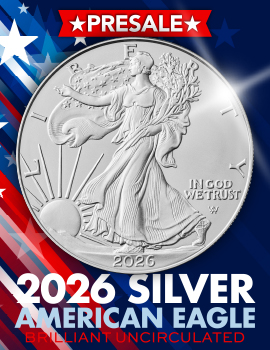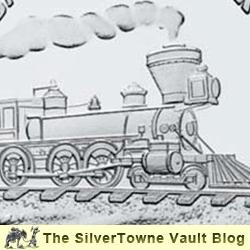
Commemorative Classical Train-Themed Bullion
The first transcontinental railroad in the United States was officially completed on May 10, 1869 when the Union Pacific and Central Pacific rail lines were joined, creating 1,700 miles of track. At the time, this was the longest such railway in the world. A ceremony was held at Promontory Summit in the Utah Territory on that day, where representatives from both railroads took turns driving a final golden spike into the ground. (The spike was removed a short time later, so no need to go searching for it.)
When the first transcontinental railroad was completed in the spring of 1869, it was celebrated as a marvel of engineering and an invaluable new link between people and places. The outposts of the American West were connected to the population centers back east. People and goods could flow freely and quickly across the continent, as the overland journey had been reduced from one measured in months to one measured in mere days.
The building and funding of the railroad helped pioneer the economic and organizational strategies that would characterize late-nineteenth century American business and industry. The project had cost hundreds of millions of dollars and required years of labor from tens of thousands of men. The building of the transcontinental railroad encompassed many of the great issues of the day: westward expansion, immigrant labor, the rise of big business, national unity and disunity, political corruption, the subjugation of the Plains Indians, and more. Another important theme in the building of the railroad was time. Prior to this undertaking, time didn’t matter as much to the country, and localities set their own time. Modern day “standard time” came about because of the railroads. The country was divided into four time zones to coincide with the schedules published by the railways.
Railroads and trains have played a major part in the progress of many nations throughout history. In honor of classic trains and everything they stand for, SilverTowne is proud to offer a line of silver and bronze train medallions. These beautiful medallions, custom minted by SilverTowne Mint, feature the following beloved trains: American Steam Locomotive 4-4-0 Type, Atlantic City Railroad 4-4-2 Type, Balloon Stack Train 4-6-0 Type, Great Western Railway President Train 4-4-2 Type, and a Ten Wheeler Train. Available in silver, bronze and intricately hand-painted bronze enameled versions, as well as complete sets. Get some for all the train lovers in your life!
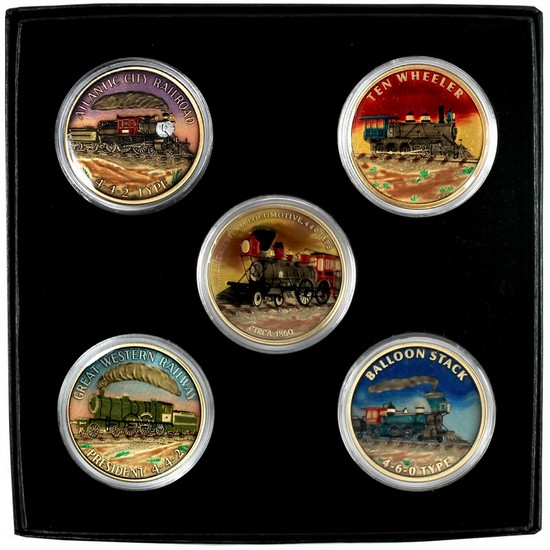
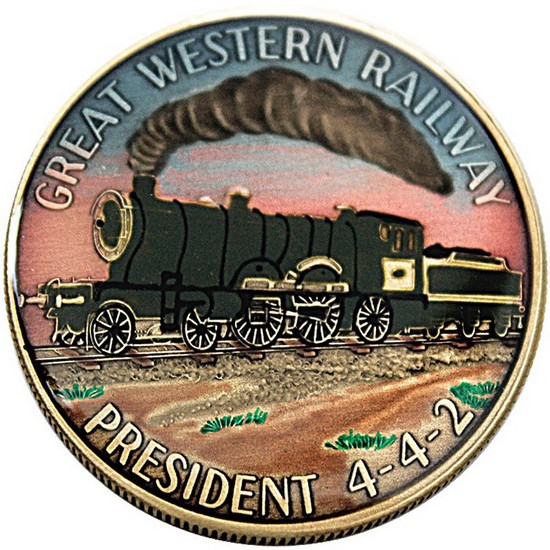
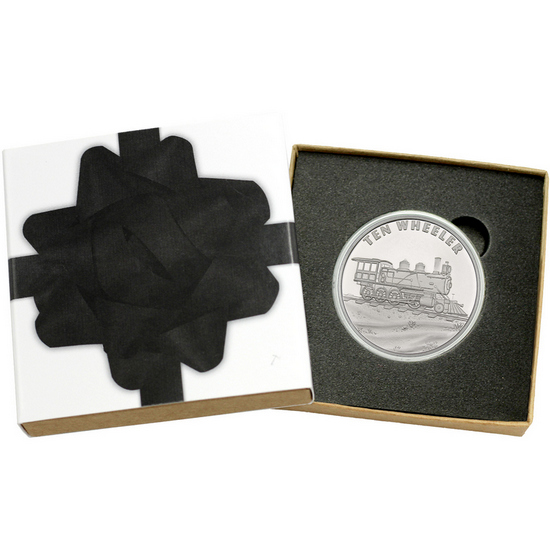
Some key dates in the building of the first transcontinental railroad include:
- The transcontinental railroad proposal was first made before Congress in 1845, but went nowhere.
- An 1859 discovery of vast silver deposits in the Comstock Lode at Virginia City, Nevada attracts hordes of prospectors to the Sierra Nevada and re-ignites the mining boom of the Gold Rush.
- In 1860 and 1861 engineer Theodore Judah, a major proponent for the project, helped form a board of directors which would come to be known as the "big four" (he also lobbied in Washington for funds).
- On July 1, 1862, President Lincoln signs the Pacific Railroad Bill which authorized the beginning of the lines by Central Pacific and Union Pacific.
- Ground is broken for the Central Pacific in January 1863 and for the Union Pacific in December 1863.
- The Civil War ends April 9, 1865 and thousands of demobilized soldiers head west and begin working on the railroad.
- One of the railroad's biggest supporters, President Abraham Lincoln, is assassinated April 14, 1865.
- The hiring of Chinese workers begins in December of 1865 in an attempt to shore up the rapid turnover of labor in the construction of the railways.
- The first passenger train to cross the Sierras on the Central Pacific route arrives in Reno on June 18, 1868.
- After months of lobbying and negotiations by the Union Pacific and the Central Pacific, they finally settle on Promontory Summit, Utah Territory as the meeting point for the two lines.
- The first transcontinental railroad is officially declared as completed with the driving of the golden spike on May 10, 1869.

